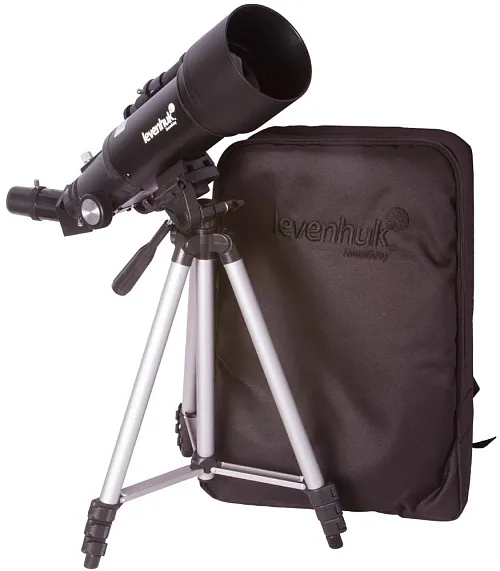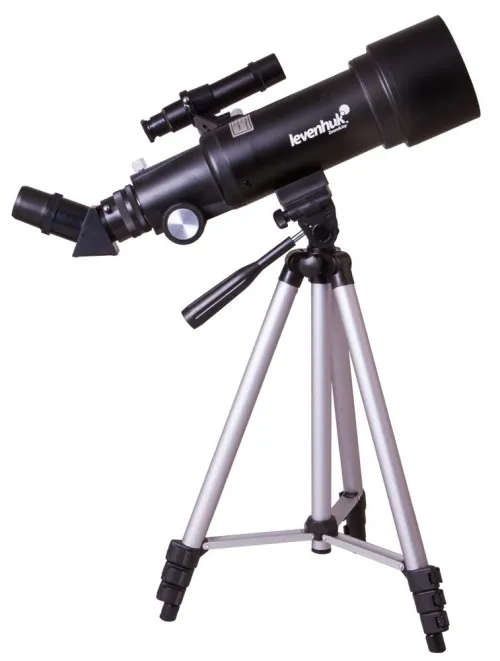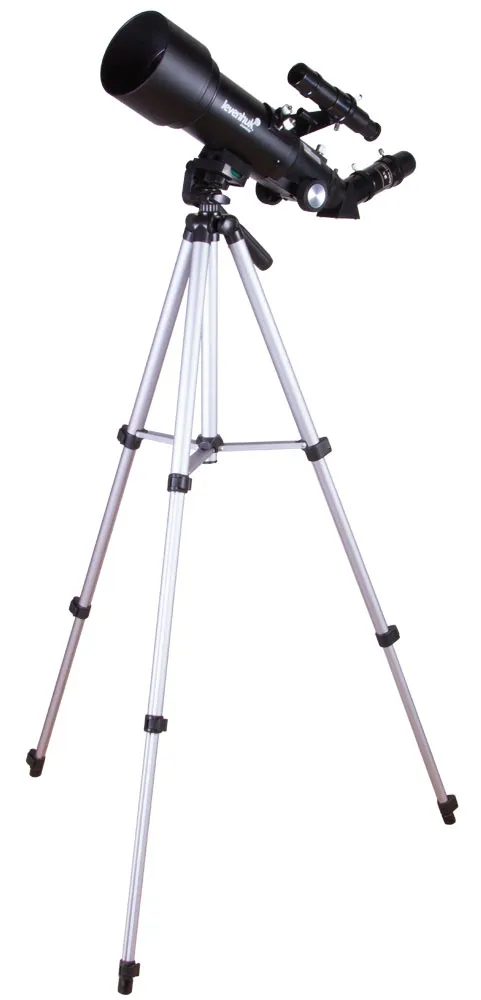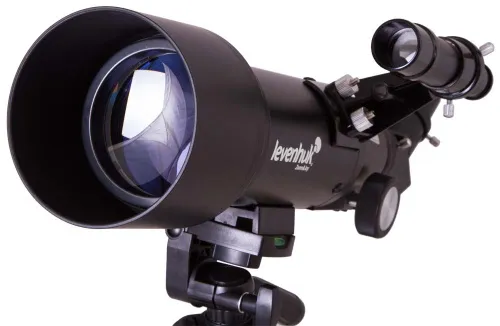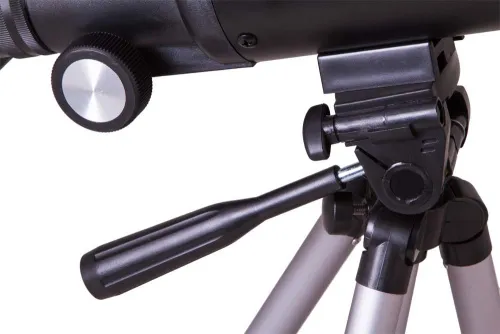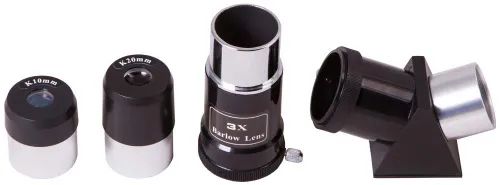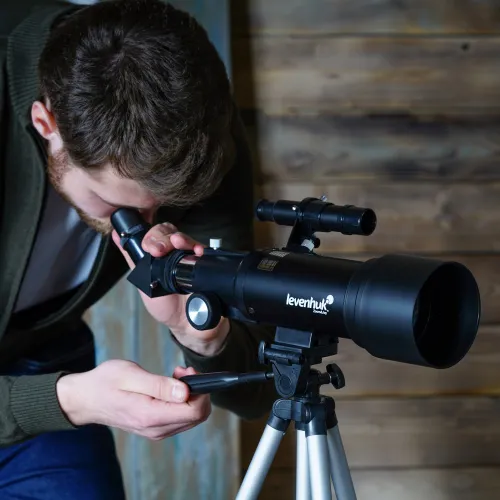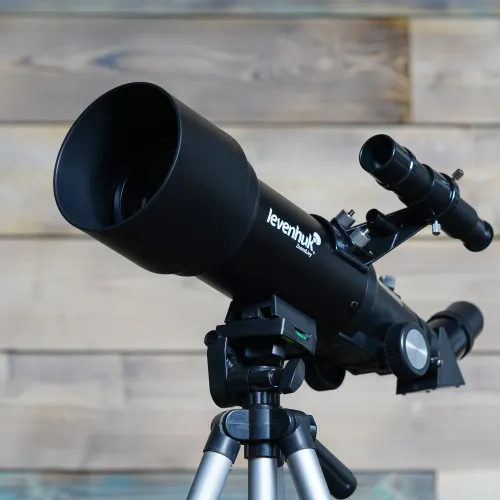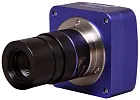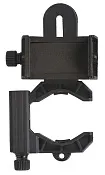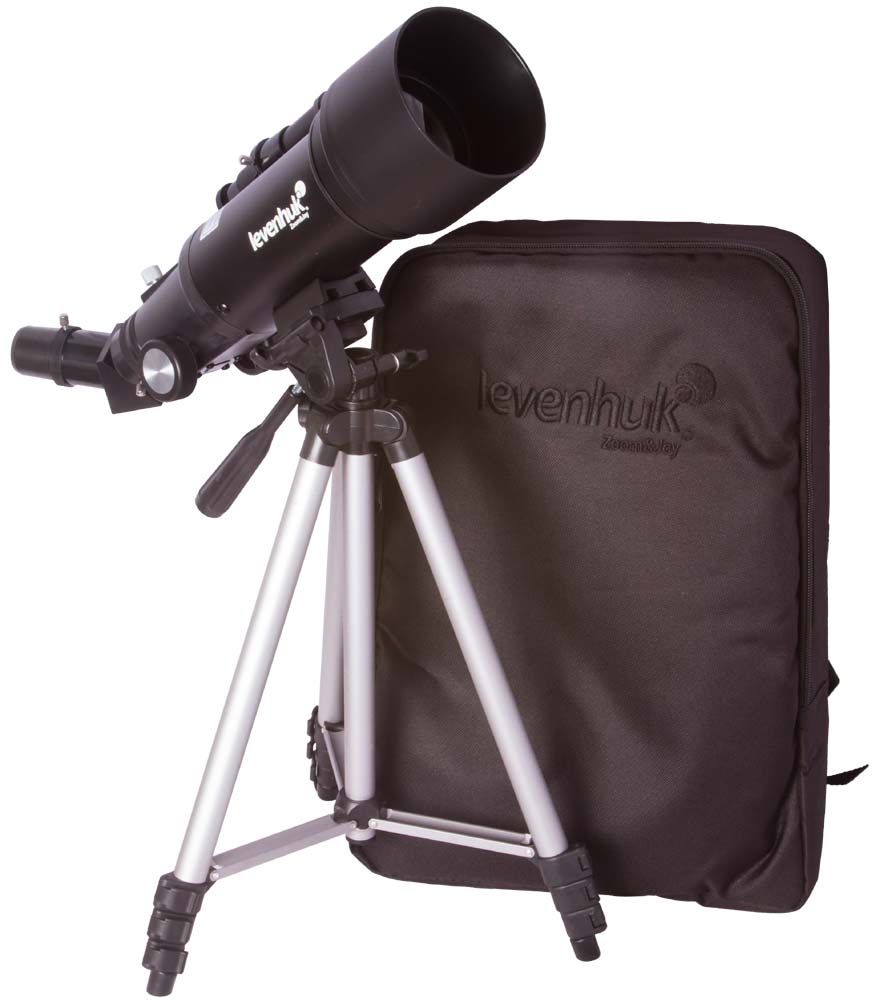Levenhuk Skyline Travel 70 Telescope
Refractor. Objective lens diameter: 70mm. Focal length: 400mm
| Product ID | 70818 |
| Brand | Levenhuk, Inc., USA |
| Warranty | lifetime |
| EAN | 5905555002354 |
| Package size (LxWxH) | 45x33x16 cm |
| Shipping Weight | 2.7 kg |
Levenhuk Skyline Travel 70 Telescope is a compact and lightweight refractor telescope on an alt-azimuth mount that is easy to take on outdoor adventures. It comes with a convenient backpack where the telescope, its mount, any optical accessories, and a tripod perfectly fit in it. This telescope is perfect for studying the solar system’s planets and the Moon. As for terrestrial observations, it can replace a powerful spotting scope. You will be able to explore deep space with Levenhuk Skyline Travel 70 as well.
The main feature of Levenhuk Skyline Travel 70 is a shortened optical tube. It is almost half the size of most other refractor tubes. Due to this feature, the telescope is convenient to take wherever you go as it does not take up much space. Moreover, it is not heavy – the telescope is designed to be as lightweight as possible. The mount is easy to operate. It won’t be a problem even for beginner users. To point a telescope at an astronomical object of interest, you just need to move its tube vertically or horizontally along an altitude or azimuth axis. The tripod is made of light aluminum and has adjustable height.
The kit includes all of the necessary accessories for observations: an optical finder, a Barlow lens, a diagonal prism, and two eyepieces. The maximum magnification with the included accessories is up to 120x.
Features:
- Telescope for terrestrial, lunar and planetary observations
- Perfect choice for kids and beginners
- Simple alt-azimuth mount
- Standard kit accessories provide magnification power up to 120x
The kit includes:
- Levenhuk Skyline Travel 70 Telescope
- Mount
- 5x24 optical finder
- K10 eyepiece, 1.25"
- K20 eyepiece, 1.25"
- Diagonal prism
- 3x Barlow lens
- Aluminum tripod
- Backpack for storage and transportation
- User manual and lifetime warranty
| Product ID | 70818 |
| Brand | Levenhuk, Inc., USA |
| Warranty | lifetime |
| EAN | 5905555002354 |
| Package size (LxWxH) | 45x33x16 cm |
| Shipping Weight | 2.7 kg |
| Optical design | refractor |
| Optics material | optical glass |
| Optics coating | fully multi-coated |
| Objective lens diameter (aperture), mm | 70 |
| Focal length, mm | 400 |
| Highest practical power, x | 140 |
| Aperture ratio | f/5.71 |
| Limiting stellar magnitude | 11.33 |
| Eyepieces | K10mm (40x), K20mm (20x) |
| Eyepiece barrel diameter, in | 1.25 |
| Barlow lens | 3x |
| Finderscope | optical, 5x24 |
| Tripod | aluminum |
| Tripod height (adjustable), mm | 400–1250 |
| Telescope control | manual |
| Mount | alt-azimuth |
| Optical tube material | aluminum |
| User level | elementary, beginners |
| Assembly and installation difficulty level | extremely simple |
| Observed object | planets of the Solar System, terrestrial objects |
| Pouch/case/bag in set | backpack |
| Extended kit | ✓ |
Convenient diagrams that describe how to install additional accessories on refractors and catadioptric telescopes
Find out how to assemble a telescope on an example of the Levenhuk Skyline 90x900 EQ telescope
This short guide will help you avoid typical mistakes and learn more about telescope and mounting types
The basics of astronomical observations for beginners
In this article we have gathered answers to some of the most frequently asked questions about telescopes
The most interesting celestial objects you can observe with Levenhuk telescopes
How telescopes work?
You can actually perform observations from your balcony!
All about telescope sizes, types, magnification, and mounts
Learn how to set up and use the telescope properly
Astronomy in light-polluted skies. Find out what you can observe in the city
Read an interesting comprehensive article on telescopes for little astronomers
The pictures are made with Levenhuk telescopes
Celestial objects you can observe with telescopes of different apertures
Colored and vivid images of galaxies, planets and star clusters entrance everyone who is fascinated by boundless space
Find an interesting review on the history of the changes to a refracting telescope
To make the process of choosing a telescope easier, we will tell you about the characteristics of the most popular types of telescopes today
Learn everything you need to know about refractor telescopes to make the right choice
polar ice caps and maria on Mars during oppositions;
atmospheric bands on Jupiter and the Great Red Spot (GRS) under ideal conditions, four moons of Jupiter;
rings of Saturn, Cassini Division under ideal conditions, pink atmospheric band on the planetary disk;
Uranus and Neptune as stars;
large globular, e.g. M13, and open clusters;
almost all of the Messier objects (not detailed).

